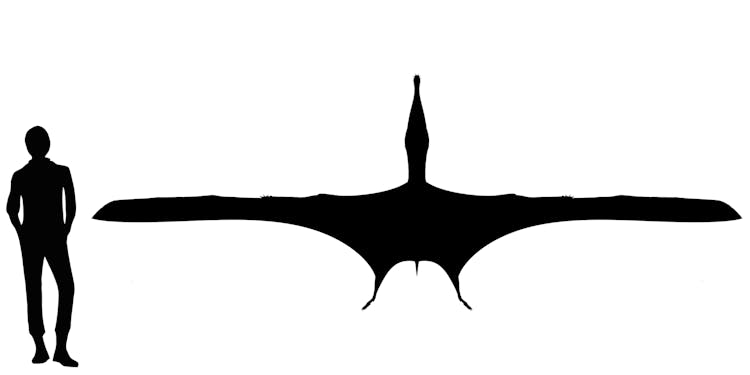


The large genus Anhanguera (meaning "old devil") is one of the best-known large pterosaurs from the Aptian Stage of the Early Cretaceous Period. In terms of appearance it has an unusually large head, keeled crests and long, powerful wings and the muscled torso of its fellow ornithocheirids. Just like other ornithocheirids, it preyed on fish that it caught while flying just above the water.
The crests at the ends of its jaws were possibly for display, either sexual display or to communicate with rivals or random members of the species. Unlike the crest of the related Tropeognathus and Ornithocheirus though, Anhanguera's crests began further down the skull and were more elongated than rounded like those of its close relations.
Ornithocheirids were not too adept on dry land due to their smallish back limbs, so walking might not have been Anhanguera's forte. The type species of the genus is Anhanguera blittersdorfi, named in 1985 by Kellner and Campos. Other species were soon discovered too, including A. piscator and A. santanae. The former of these two has since been reassigned to the genus Coloborhynchus.
The genus Anhanguera was created on the basis of bones from Brazil's highly prolific Early Cretaceous site, the Santana Formation. It lived alongside a slew of other big pterosaurs of varying lifestyles and diets, including other fish-eating ornithocheirids.
